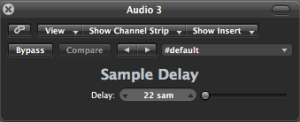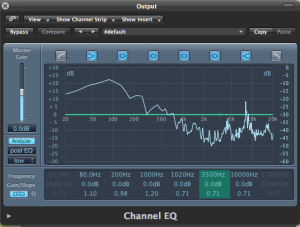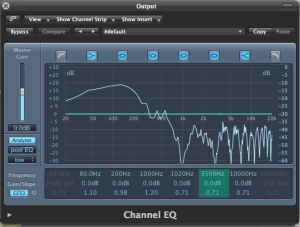In the past few posts, I’ve been throwing a lot of words and equations at you, but I haven’t actually demonstrated that anything I’ve said is true. So here I’m going to demonstrate a few of the comb filtering concepts.
In my first comb filtering blog post I said:
“Therefore: f = (180°(2n+1)) / (360°*Δ) Now just plug in your delay time and values of n to find out which frequencies are canceled.
Let’s say your copied signal is delayed by .0005 seconds (aka half a millisecond). When n = 0,1,2,3,4,… f = 1000,3000,5000,7000,… respectively.”
I want to show you that this really happens. In order to create this effect, I used an audio file (Little Lies by Fleetwood Mac) and a sample delay in my DAW, Logic 9. The track is sampled at 441000 samples per second, so if we want to find how many samples we need to delay to be equivalent to half a millisecond we observe:
(seconds/samples) * samples = seconds
1/44100 * samples = .0005
samples = .0005*44100 = 22 (approximately)
The effects are actually pretty apparent just by using the spectrum analyzer in Logic’s Channel EQ
No Comb Filter:
Comb Filter:
You can see that the frequencies that we predicted would be notched, 1000, 3000, 5000, 7000,… are indeed the frequencies that are notched. This difference between the two is clearly audible and I encourage you to try this on your own, as I am hesitant to upload copyrighted material.




